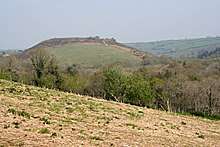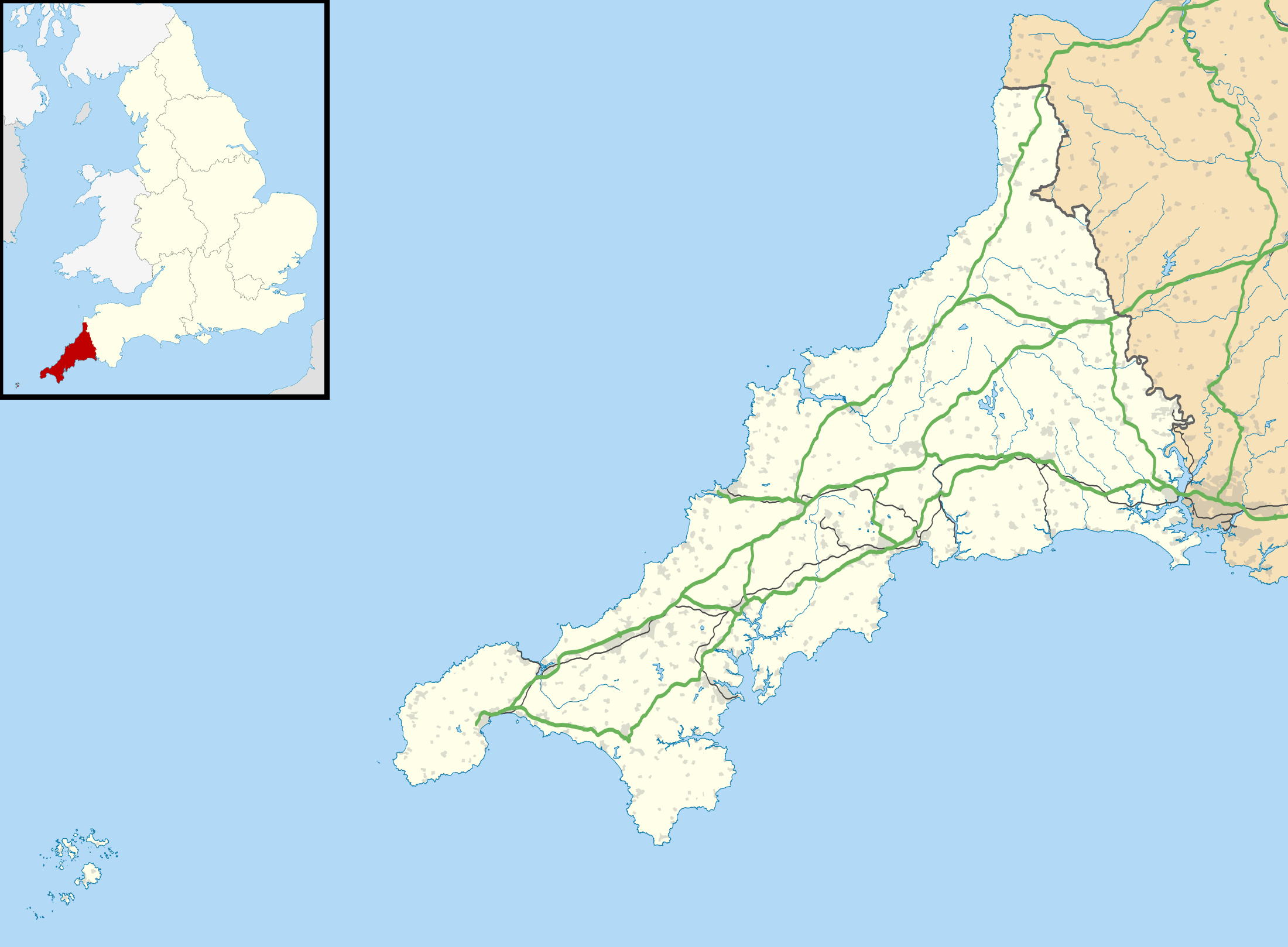Cadson Bury
Cadson Bury is an Iron Age hillfort about 2 miles (3.2 km) south-west of Callington, in Cornwall, England.
 Viewed from Lower Crift, about 0.75 miles (1.2 km) to the south | |
 Shown within Cornwall | |
| Location | Near Callington, Cornwall grid reference SX 344 673 |
|---|---|
| Coordinates | 50°28′57″N 4°20′5″W |
| Type | Hillfort |
| Length | 275 metres (902 ft) |
| Width | 170 metres (558 ft) |
| Area | 2.5 hectares (6.2 acres) |
| History | |
| Periods | Iron Age |
| Identifiers | |
| Atlas of Hillforts | 0607 |
It is owned by the National Trust,[1] and has been a scheduled monument since 24 October 1950.[2]
Description
The fort is sited in a commanding position on a steep hill, called Cadson Bury Down, above the River Lynher.[2]
It is a univallate hillfort, probably of the early Iron Age.[3] The oval enclosure, longest from north to south, is about 275 metres (902 ft) long and 170 metres (558 ft) wide, enclosing an area of about 2.5 hectares (6.2 acres). The rampart is up to 2 metres (6 ft 7 in) above the interior; the outer ditch is about 1.3 metres (4 ft 3 in) deep on the east side, less visible elsewhere.[1][2]
There are no traces of house platforms within the enclosure. There are two opposed inturned entrances on the east and west sides; the eastern entrance is clearly defined, the western entrance less so. Another entrance on the south may not be original.[1][2][4]
See also
References
| Wikimedia Commons has media related to Cadson Bury Hill Fort. |
- Cadsonbury Camp, Cadsonbury National Trust Heritage Records Online. Retrieved 16 November 2017.
- Historic England. "Slight univallate hillfort called Cadson Bury (1004494)". National Heritage List for England. Retrieved 16 November 2017.
- Richard Wainwright. A Guide to the Prehistoric Remains in Britain. Volume 1: South and East. Constable, 1979. Page 42.
- Cornwall's Archaeological Heritage. The Historic Environment Unit, Cornwall County Council, 2003. Page 22.